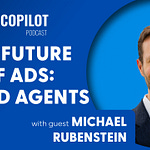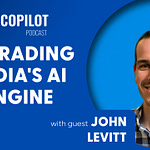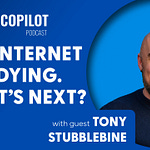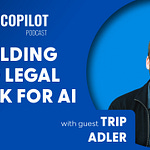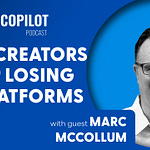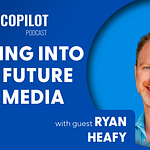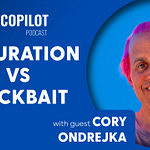If you grew up with Time magazines lying around the house, you probably have a sense of memory of that red border: serious, premium, grown-up news features—not just the facts. Now imagine that same publication trying to stay trusted in a world where people increasingly turn to AI for that kind of summarized analysis of what’s happening in the world.
In this episode of The Media Copilot podcast, Pete talks with Mark Howard, Chief Operating Officer at Time, about what it actually looks like when a 102-year-old publisher decides AI is not just a threat to manage, but a system it needs to understand from the inside out.
Howard describes a shift that feels less like a tech pivot and more like a newsroom learning to breathe in a new atmosphere. Instead of blocking AI or pretending the moment will fade, Time chose to engage, studying how bots interact with their stories and eventually creating its own AI experience for readers—grounded entirely in a century of reporting.
The interesting part is not the shiny features. It’s the posture. Howard talks about AI the way editors once talked about search or social, an environment you may not prefer but one you have to understand if you expect your journalism to be found.
The outcome of that work is the Time AI Agent, built with Scale AI, which pulls only from Time’s archive rather than the open web. It is a structured doorway into Time’s entire archive, built for an era when readers want context delivered instantly, in their language, in their format, without losing the integrity of the reporting beneath it.
Howard notes that the core act of journalism is still carried out by reporters, editors, and the relationships they build. The work that appears in Time comes from interviews, access, verification, and context, not automated output. The Agent is meant to help readers move through that reporting in different ways, not to reshape or replace the work itself.
What is most compelling is why they are doing it. The belief that the next phase of the internet will center on agents interacting with agents. And if that is where information goes, Time wants to make sure its archive can be read in that new language.
What we cover in this episode
• How Time decided to negotiate with AI companies instead of suing or sitting on the sidelines
• The behind-the-scenes plumbing needed to protect IP and understand bot traffic
• The evolution from Person of the Year experiments to daily AI audio briefings to the full Time AI Agent
• Why Time built a private model grounded only in its own archive and what that means for accuracy and trust
• How Time is thinking about AI marketplaces, enterprise licensing, and the emerging agent to agent web
• What all of this means for the newsroom, reporters, and the future of audience relationships
If you want to go deeper
Mark’s articles on Time: https://time.com/author/mark-howard
The Story Behind the TIME AI Agent: https://time.com/7332572/the-story-behind-the-time-ai-agent
LinkedIn: https://www.linkedin.com/in/markdhoward
X: https://x.com/markdhoward
This post was drafted with AI and then carefully edited by Media Copilot editors.
📩 Enjoyed this episode?
Subscribe to The Media Copilot on Substack, Apple Podcasts, Spotify, or your favorite app. On YouTube? Tap the Like button and Subscribe to the channel.
For more AI tools and resources built for media professionals, visit MediaCopilot.ai.
Produced by Pete Pachal and Executive Producer Michele Musso
Edited by the Musso Media Team
Music: “Favorite” by Alexander Nakarada, licensed under CC BY 4.0
© 2025 Musso Media. All rights reserved. © AnyWho Media 2025



